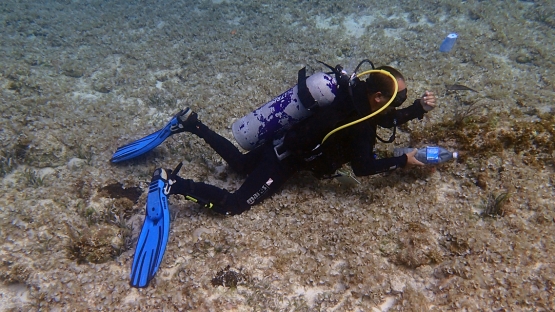When tiny marine organisms grow uncontrolled, forming what is called a harmful algal bloom, their toxins can make people sick, harm ocean life and cause millions of dollars in lost seafood revenues. To help mitigate the effects of these toxins, scientists at the IAEA are working with researchers in Cuba to detect and measure biotoxins in ocean organisms and to develop monitoring and reference tools that will help identify such outbreaks worldwide. The project is funded through the Peaceful Uses Initiative (PUI).
“With a better understanding of how harmful algal blooms behave and how their toxins enter the food chain, it will be easier for countries to monitor toxins and control the consumption of contaminated seafood,” said Marie-Yasmine Dechraoui Bottein, a research scientist at the IAEA leading this collaborative project with the Centre de Estudios Ambiantales de Cienfuegos (CEAC) in Cuba. “Harmful algal blooms have a particularly big impact on small island states that rely heavily on their fisheries and tourism.”
In Cuba, the fishing and sale of thirteen fish species including groupers, snappers and jacks have been prohibited year-round since 1996 due to a high risk of ciguatera fish poisoning — the most common non-bacterial seafood intoxication caused by ingesting fish that have been contaminated by ciguatera toxin that comes from harmful algal blooms. The toxin is most commonly found in large tropical reef fish. It is only recently that Cuban scientists, with the help of the IAEA, acquired the capability to measure ciguatera toxins in seawater and in fish and shellfish using a nuclear technique called radioligand receptor binding assay (RBA). This method is based on the specific interaction between the toxins and the receptor they bind (pharmacological target), in which a radiolabeled toxin competes for a limited number of receptor binding sites with the toxin in the sample being analysed, allowing quantification of the toxicity of the sample.
Developing reference material
With these data and reference materials, we can refine how we monitor toxins to help minimize their impact.






